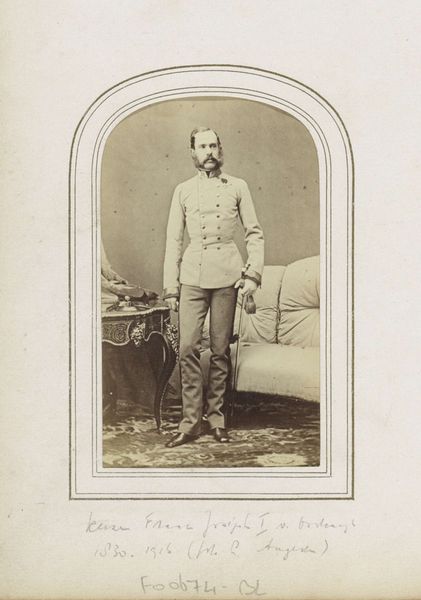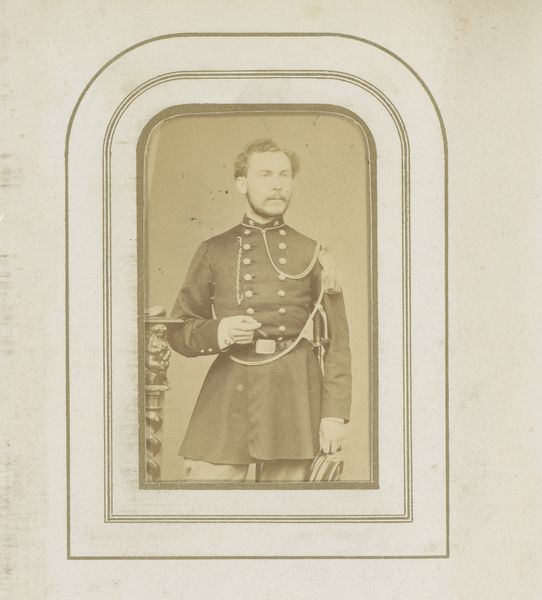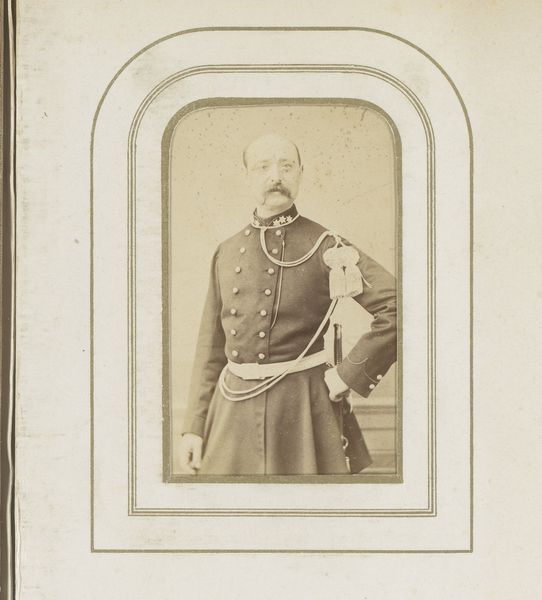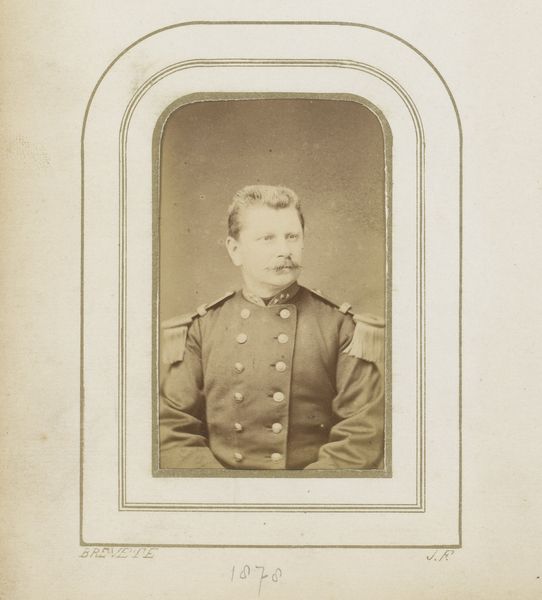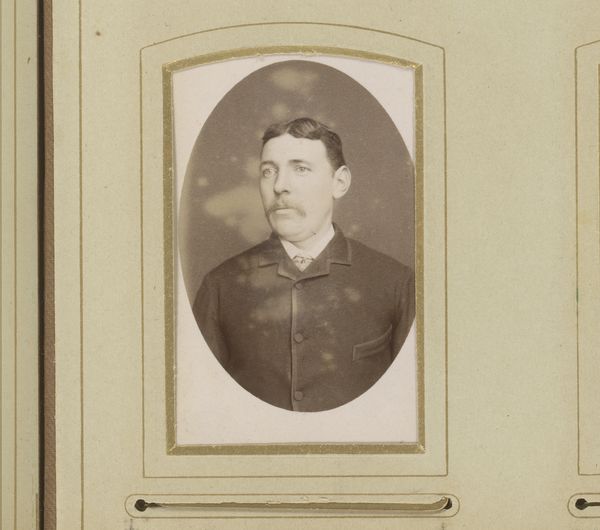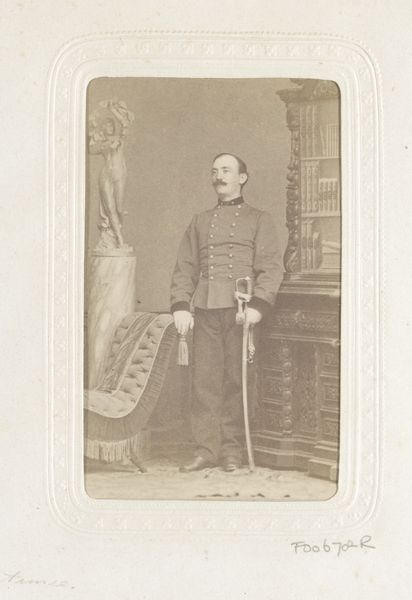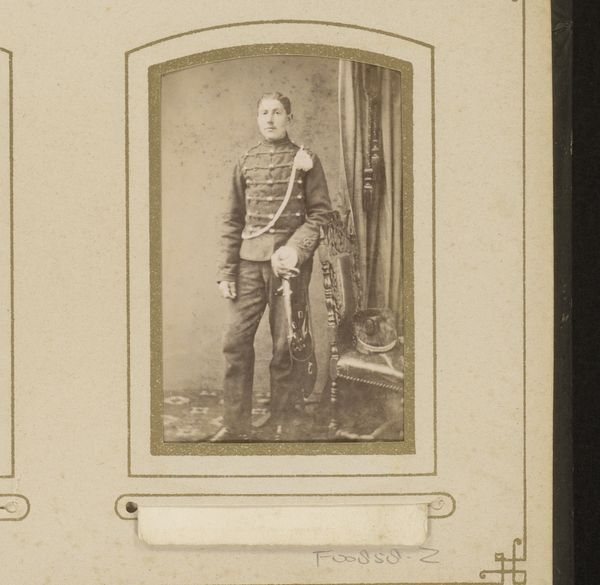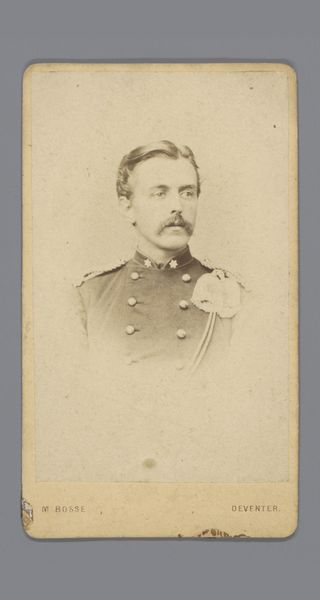
print, daguerreotype, photography
#
portrait
#
16_19th-century
# print
#
daguerreotype
#
photography
#
history-painting
Dimensions: 8.8 × 5.5 cm (image/paper); 10 × 6.3 cm (mount)
Copyright: Public Domain
Curator: It’s sepia-toned and feels a bit ghostly, wouldn’t you say? Like looking into a forgotten era. Editor: Indeed. What strikes me is the very crisp detail for something from the 1860s. Here we have a daguerreotype, or rather, a photographic print, titled "The Emperor of Austria," currently residing here at the Art Institute of Chicago. It captures a full-length portrait. Curator: I'd say “rigid” comes to mind. He’s standing ramrod straight, uniform buttoned up tight. No hint of a smile. You get the sense he's trying so hard to project power, that, strangely, he appears diminished. Like a paper doll cut out and propped up. Editor: Well, those early photographic processes often required subjects to remain still for extended periods, hence the stiffness. Yet, I’d suggest this very formality speaks volumes. The composition adheres to strict rules of portraiture, emphasizing hierarchy and imperial bearing. Notice how his stance, coupled with the ornate furniture, creates diagonal lines that lead the eye upward, reinforcing his authority. Curator: Authority perhaps, but not necessarily strength. More like duty, a heavy burden that's draining him. It makes you wonder about the person behind the emperor. Was he happy? Did he ever sneak out to a tavern incognito? This picture is trying to hide everything that would bring the Emperor closer to us, to make him a God, something not really believable in this level of detail and realism. Editor: That's where the beauty lies, right? In these photographic prints, what emerges is not the flawless visage of a God-like ruler, but the undeniable presence of humanity. The Emperor stands before us, immortalized by light and chemistry, his story open to our reading, interpretation, and imaginative musings. It provides us not just a likeness, but a glimpse into 19th-century portraiture's symbolic language, where every detail, no matter how stiff, serves its meaning. Curator: In its imperfection lies its truth and the chance for a bit of playful speculation! I think there’s always value in connecting the past and ourselves by seeing the common elements, by having the courage to question. Editor: Exactly. It's not just an image; it is an historical and artistic puzzle and personal encounter waiting to be solved.
Comments
No comments
Be the first to comment and join the conversation on the ultimate creative platform.
